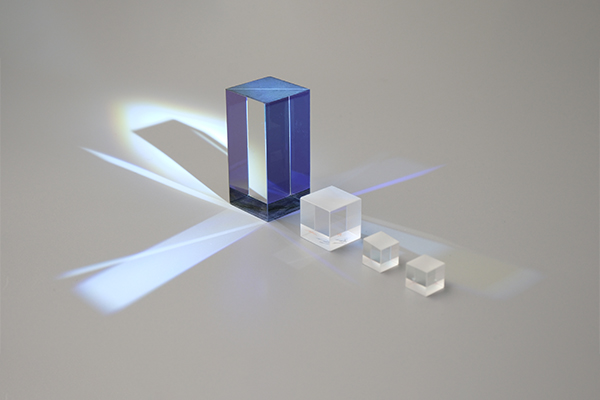Introduction to Non-Polarizing Beamsplitter Cubes
In the field of optical technology, precision and innovation are paramount. One such innovation is the non-polarizing beamsplitter cube, an optical device designed to split an incoming light beam into two beams of similar energy without changing its polarization state. Unlike traditional polarizing beamsplitters, these cubes are insensitive to the light’s polarization, making them indispensable in applications where maintaining the beam’s polarization state is crucial. This article delves into the intricacies of non-polarizing beamsplitter cubes, exploring their design, applications, and the capabilities of leading manufacturers like MOK Optics.

Learning About Non-Polarizing Beamsplitter Cubes
What are Non-Polarizing Beamsplitter Cubes?
A non-polarizing beamsplitter cube is an optical device composed of two precision right-angle prisms bonded together. The hypotenuse of one of the prisms is coated with a dielectric material, enabling the cube to split the incoming light into two separate beams without changing its polarization state. This feature makes it ideal for applications where preserving the original light’s polarization properties is crucial.
How Do Non-Polarizing Beamsplitter Cubes Work?
The key to the functionality of non-polarizing beamsplitter cubes lies in their unique coating. A dielectric coating on the hypotenuse ensures uniform light splitting regardless of its polarization state. This setup enables the cubes to maintain stable performance under a wide range of energy conditions, making them suitable for systems that rely on precise polarization control.
MOK Optics’ Capabilities
MOK Optics is a leading supplier of non-polarizing beamsplitter cubes, offering products of exceptional precision and quality. Here are some of their key capabilities:
Materials: MOK Optics uses N-BK7 and UVFS materials in its beamsplitter cubes, ensuring high durability and optical clarity.
Dimensional Tolerance: These cubes have a dimensional tolerance of ±0.1 mm, allowing for precise fit within optical systems.
Surface Quality: MOK Optics guarantees a surface quality of up to 20-10, minimizing defects and maximizing performance.
Flatness: Its cubes feature a flatness of up to λ/8 @ 633 nm, ensuring minimal wavefront distortion.
Beam Deviation: MOK Optics’ cubes offer a beam deviation of 1 arc minute, enabling precise beam splitting.
Non-polarizing beamsplitter coating: This coating has a T/R ratio of 50/50 ±5% and a T+R ratio greater than 85%, ensuring optimal transmission and reflectivity.
Applications of Non-polarizing Beamsplitter Cubes
Scientific Research
Non-polarizing beamsplitter cubes are an integral part of scientific research, particularly in fields such as interferometry and optical coherence tomography (OCT). They can split light without affecting polarization, making them ideal for experiments requiring precise optical measurements.
Medical Imaging
In medical imaging, maintaining the polarization state of light is crucial for accurate diagnosis. Non-polarizing beamsplitter cubes are used in systems such as microscopy to improve image quality by preserving the polarization properties of light.
Laser Systems
Laser applications require precision and stability. Non-polarizing beamsplitter cubes are used in laser systems to ensure that both transmitted and reflected beams maintain their original polarization state, making them suitable for high-power applications.
High-end Digital Cinema Cameras
In the film industry, non-polarizing beamsplitter cubes are used in high-end digital cinema cameras to separate light into its three primary colors (red, green, and blue) without changing polarization. This ensures exceptional image quality and color accuracy.
Choosing the Right Non-Polarizing Beamsplitter Cube
Selecting the right non-polarizing beamsplitter cube requires considering the following aspects:
Wavelength Range: Determine the wavelength range of the light source to ensure compatibility with the cube.
Cube Size: Select a cube size that meets the requirements of the optical system.
Splitting Ratio: Consider the reflection-transmittance ratio required by the application.
Damage Threshold: Ensure the cube can withstand the power level required by the application.
Conclusion
Non-polarizing beamsplitter cubes are key components in modern optical systems, providing high precision and reliability in a wide range of applications. MOK Optics continues to innovate and provide high-quality solutions that meet the needs of scientific research, medical imaging, and laser systems. If you are interested, please contact us directly!
